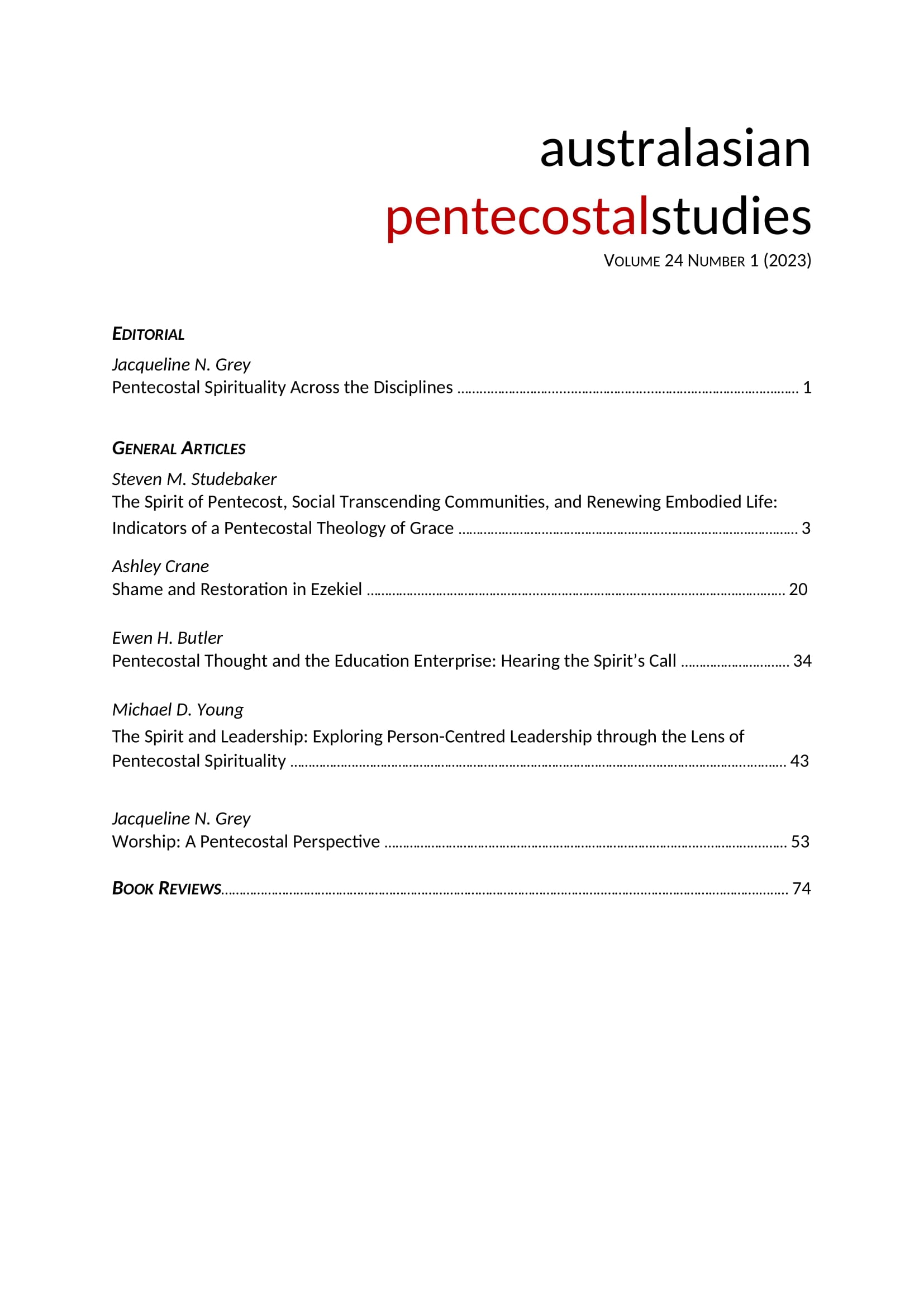The Spirit of Pentecost, Social Transcending Communities, and Renewing Embodied Life:
Indicators of a Pentecostal Theology of Grace
Abstract
Exuberant charismatic worship and spirituality characterise Pentecostal experience. Social and economic mobility, however, are also common fruits of Pentecostal experience. This article considers two historical and two contemporary cases in the Pentecostal movement. The early Pentecostal experiences at Pandita Ramabai’s (1858–1922) Mukti Mission and William J. Seymour’s (1870–1922) Azusa Street revivals fostered social transcending communities—communities that transcended social, class, and ethnic bigotries. By enacting the inclusive community of Pentecost, they indicted the racist and chauvinist societies that surrounded them. Vietnamese and Latin American Pentecostals demonstrate that the Pentecostal experience of grace renews embodied life. Participating in Pentecostal renewal transforms the material circumstances of peoples’ lives. Charismatic worship and spirituality do not sublimate the need for addressing bleak social and economic conditions. On the contrary, they are the incubators for the Holy Spirit to empower new patterns of life in and for this world. Sociological analyses, relying on a Weberian paradigm, often suggest that social mobility is a by-product of Pentecostalism (e.g., Miller and Yamamori’s “Pentecostal ethic”). The theological yield of this investigation of historical and contemporary cases in the Pentecostal movement is that the social and material experience of redemption among Pentecostals is intrinsic to the grace of the Spirit of Pentecost. The social and material features of Pentecostal experience, moreover, map to the ministry of the Spirit anointed Christ and the inclusive community of the Spirit of Pentecost.
Downloads
Published
How to Cite
Issue
Section
License
Authors who publish with this journal agree to the following terms:
- Authors retain copyright and grant the journal right of first publication with the work simultaneously licensed under a Creative Commons Attribution License that allows others to share the work with an acknowledgement of the work's authorship and initial publication in this journal
- Authors are able to enter into separate, additional contractual arrangements for the non-exclusive distribution of the journal's published version of the work (e.g., post it to an institutional repository or publish it in a book), with an acknowledgement of its initial publication in this journal.
- Authors are permitted and encouraged to post their work online (e.g., in institutional repositories or on their website) prior to and during the submission process, as it can lead to productive exchanges, as well as earlier and greater citation of published work (See The Effect of Open Access).


